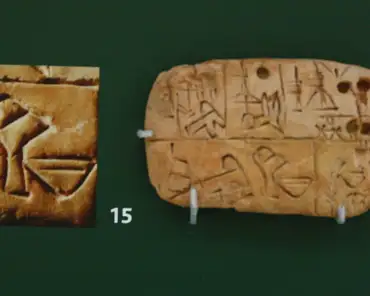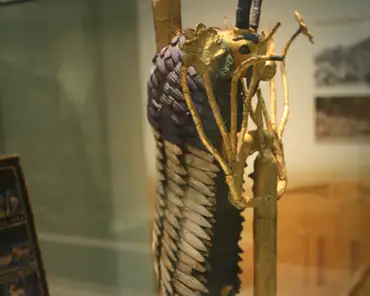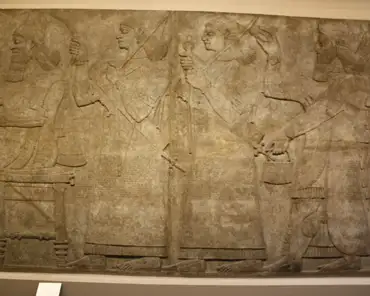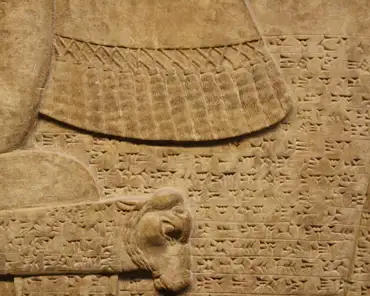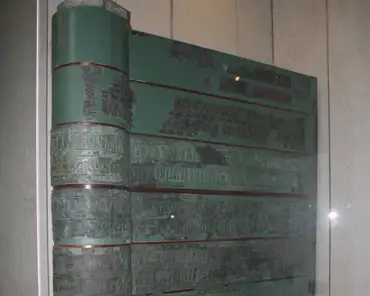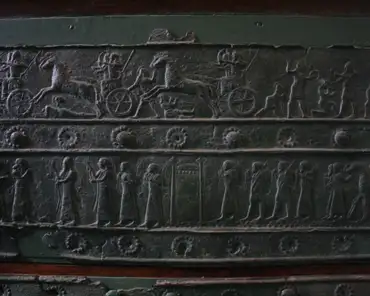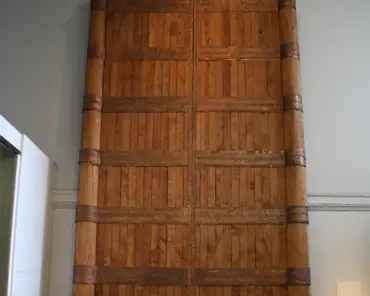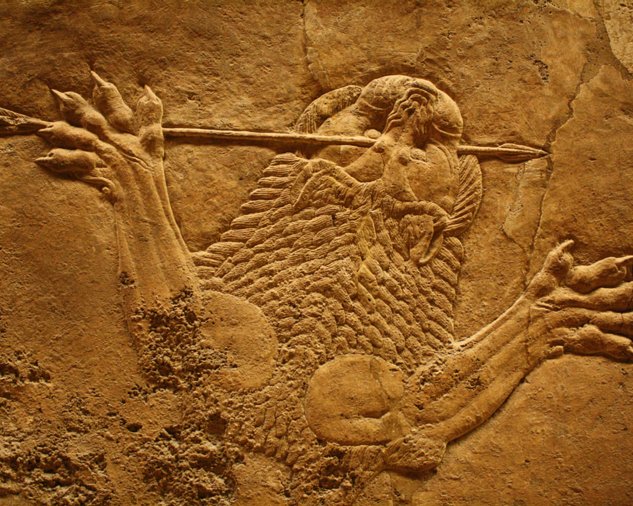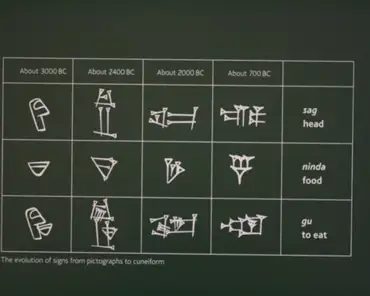
Writing was invented in ancient Iraq. The first known use of writing was for official book-keeping in city states like Uruk. The Sumerians were soon able to…
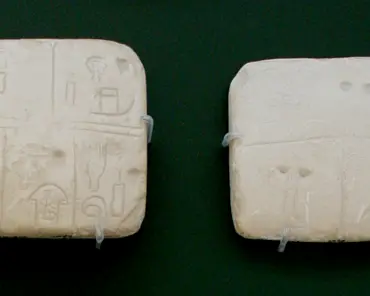
Cast of a stone tablet with pictographic writing. The signs include a human head, a sledge, a foot, a hand and the numbers 1, 2 3. 3300-3100 BC, Late Uruk…
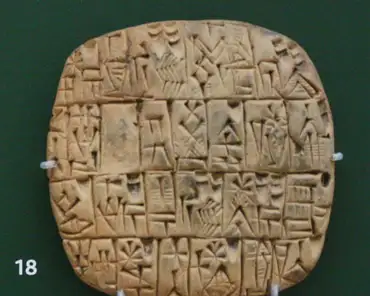
Summary account of silver for the governor. By this stage the reed strokes are fully wedge-shaped and the writing could convey the Sumerian language in full. …
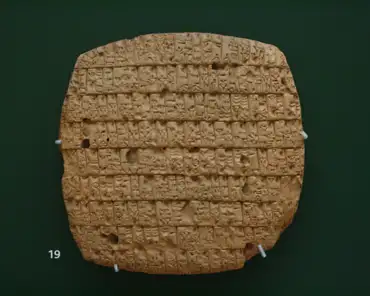
Book keeping: adult workers receive standard rations of 30 or 40 pints of barley per month, children received 20. About 2350 BC, from Girsu.
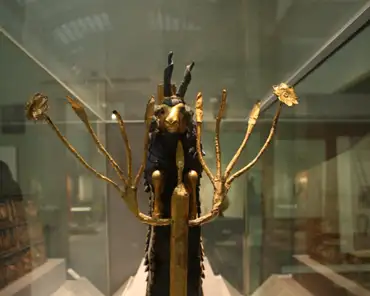
Ram in a Thicket: this statue, traditionally known as the Ram in a Thicket. is more accurately described as a goat. It stands with its forelegs on the branches…
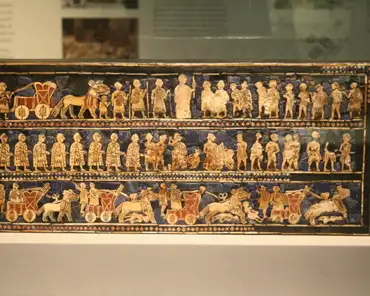
The Standard of Ur. This object was named at the time of excavation by Leonard Woolley because it was found near the shoulder of a man, as if it were being…
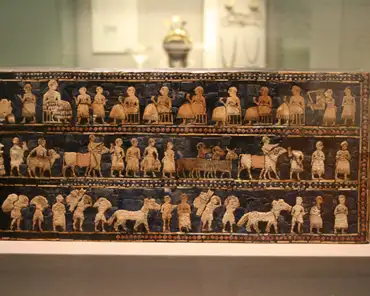
This side of the Standard of Ur presents a completely different theme from the scene of battle on the other side. in the top register a banquet with religious…
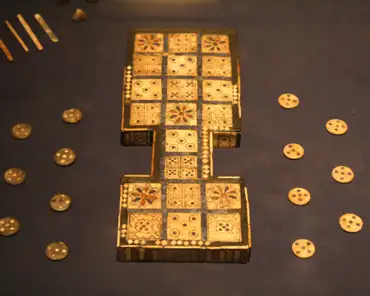
In about 2000 BC the Third Dynasty of Ur collapsed and Mesopotamia split into a number of small city-states. Among these, Babylon rose to prominence for the…
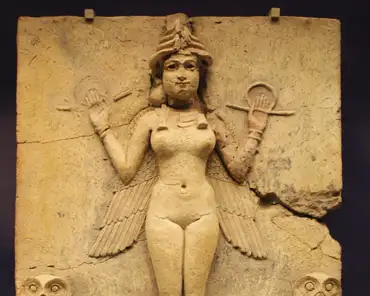
The Queen of the Night represents an ancient Mesopotamian goddess. She may have been lshtar, goddess of sexual love and war, or perhaps lshtar's sister and…
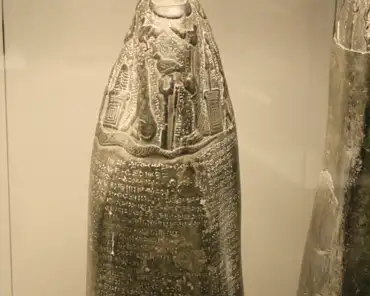
From around 1500 BC the fertile flood plain of the Tigris and Euphrates rivers in central and southern Mesopotamia (Babylonia) fell under the control of Kassite…
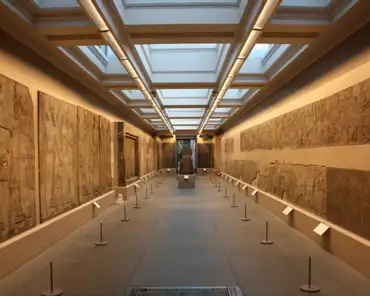
During the 9th century BC Assyrian kings greatly extended their international power and influence. Ashurnasirpal (883-859 BC) and his son Shalmaneser III…
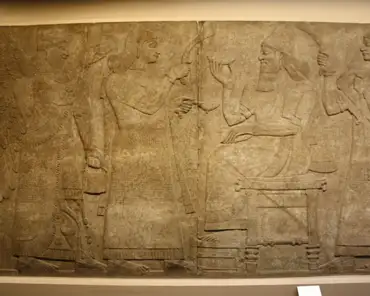
The palace of Nimrod was built by Ashurnasirpal II (883-859BC); it portrays the Assyrian king as invincible, under divine protection. Court scene, Assyrian,…
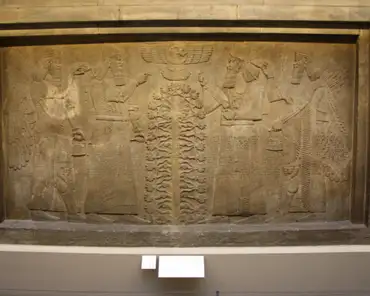
Symbolic scene, Assyrian, about 865-860 BC. From Nirnrud, North-West Palace. King Ashurnasirpal appears twice, dressed in ritual robes and holding the mace…
